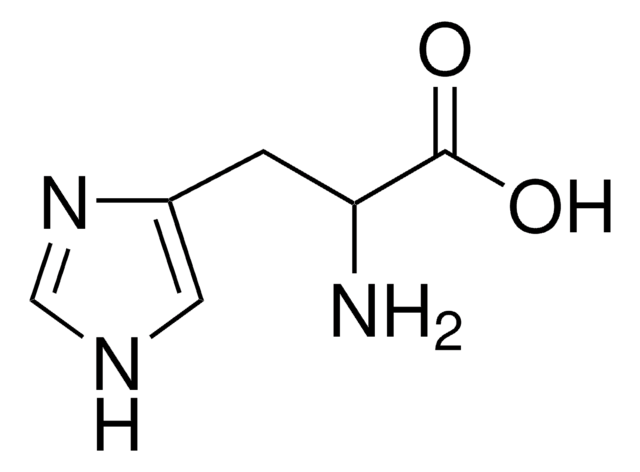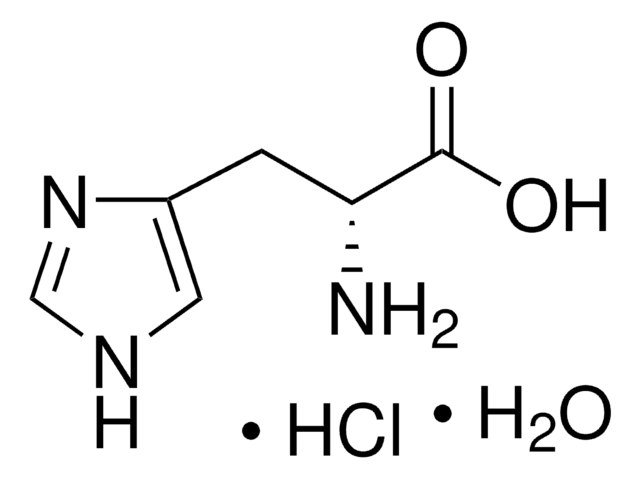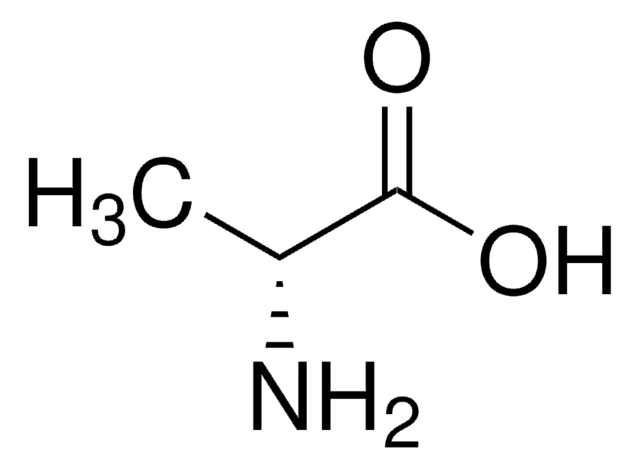Kluczowe dokumenty
H3751
D-Histidine
≥98% (TLC)
Synonim(y):
(R)-2-Amino-3-(4-imidazolyl)propionic acid, D-α-Amino-β-(4-imidazolyl)propionic acid
About This Item
Polecane produkty
Próba
≥98% (TLC)
Formularz
powder
kolor
white
mp
280 °C
rozpuszczalność
1 M HCl: soluble
Zastosowanie
detection
peptide synthesis
ciąg SMILES
N[C@H](Cc1c[nH]cn1)C(O)=O
InChI
1S/C6H9N3O2/c7-5(6(10)11)1-4-2-8-3-9-4/h2-3,5H,1,7H2,(H,8,9)(H,10,11)/t5-/m1/s1
Klucz InChI
HNDVDQJCIGZPNO-RXMQYKEDSA-N
Szukasz podobnych produktów? Odwiedź Przewodnik dotyczący porównywania produktów
Działania biochem./fizjol.
Inne uwagi
Zastosowanie
Kod klasy składowania
11 - Combustible Solids
Klasa zagrożenia wodnego (WGK)
WGK 1
Temperatura zapłonu (°F)
Not applicable
Temperatura zapłonu (°C)
Not applicable
Środki ochrony indywidualnej
Eyeshields, Gloves, type N95 (US)
Wybierz jedną z najnowszych wersji:
Masz już ten produkt?
Dokumenty związane z niedawno zakupionymi produktami zostały zamieszczone w Bibliotece dokumentów.
Klienci oglądali również te produkty
Nasz zespół naukowców ma doświadczenie we wszystkich obszarach badań, w tym w naukach przyrodniczych, materiałoznawstwie, syntezie chemicznej, chromatografii, analityce i wielu innych dziedzinach.
Skontaktuj się z zespołem ds. pomocy technicznej






